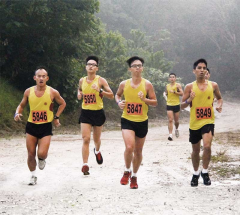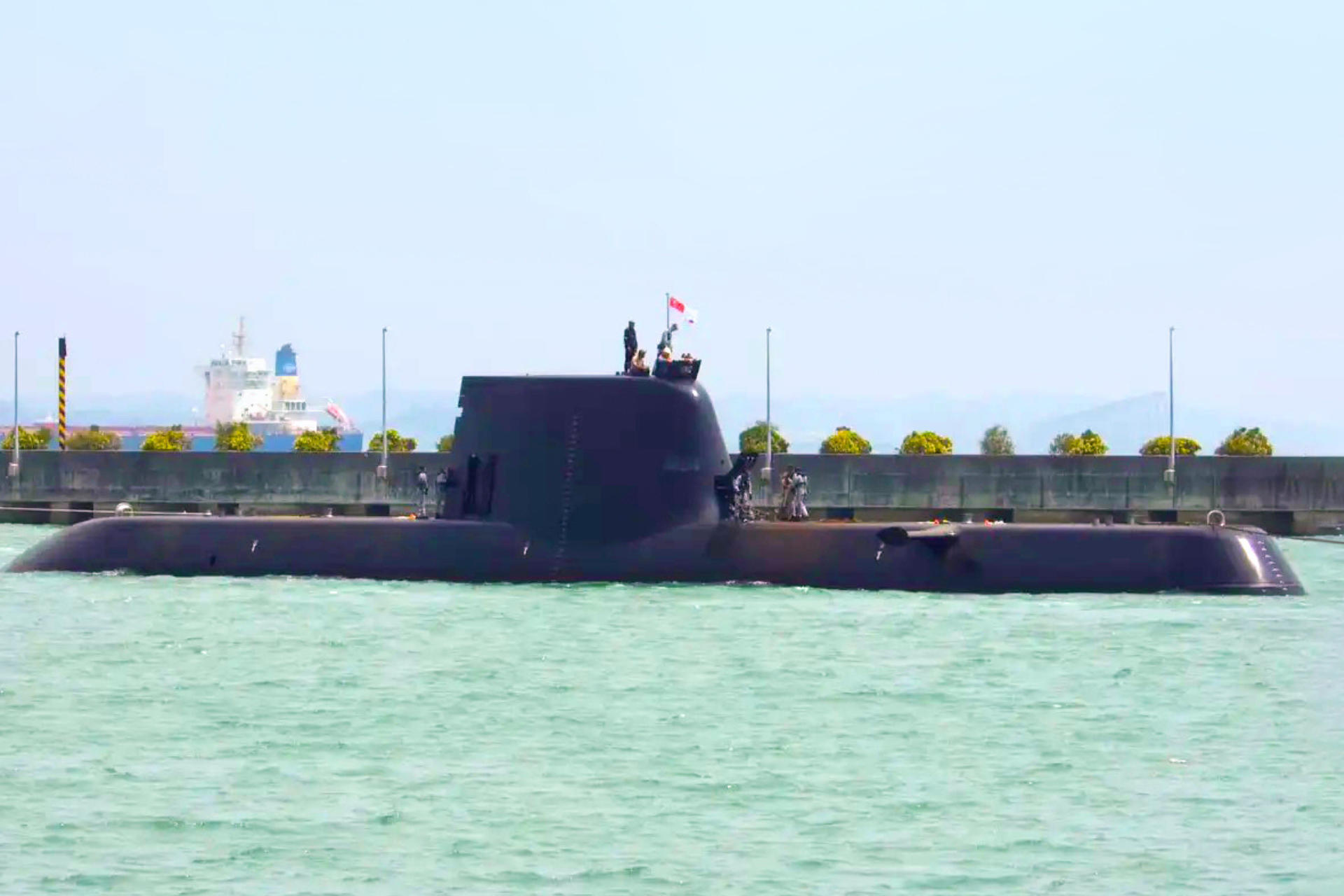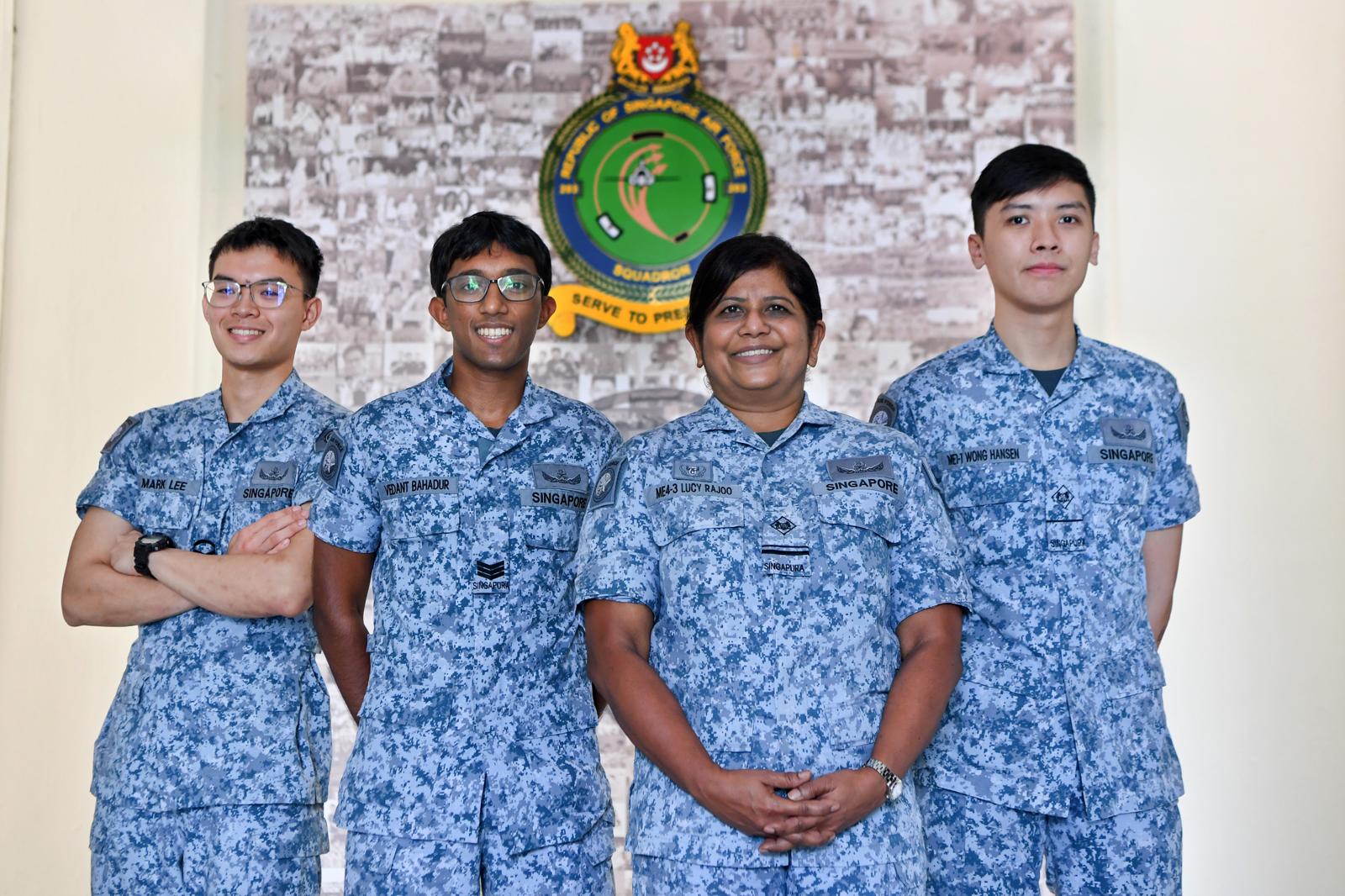BUILDING STRENGTH AND COHESIVENESS
STORY // Koh Eng Beng
PHOTO // Courtesy of Singapore Army
Tiger Trail Challenge
Less than one percent of all participants complete the entire Tiger Trail Challenge within the time limit. That's how tough the notorious cross-country run is.
The annual run is a signature event that commemorates the anniversary of the 3rd Singapore Division (3 Div). Formed in 1991, 3 Div is the Army's first Combined Arms Division, comprising elements from Infantry, Armour, Artillery, Engineers, Signals, and Combat Service Support.
Stretching over 20km, the Tiger Trail route leads to 13 knolls, including the infamous Peng Kang Hill, Elephant Hill, and 106 Hill, with slopes about 45 degrees steep. Runners have to conquer as many knolls as possible within two hours.
"The difficulty is trying to conquer all the knolls within the time limit. Two hours to run 16km is not much of an issue for the average person, but to climb up a knoll is actually very demanding," explained 3rd Warrant Officer (3WO) Desmond Goh, the organising chairperson of last year's Tiger Trail Challenge. Started in 1999, the Tiger Trail Challenge began as training in the lead-up to the then-annual Army Half Marathon (AHM).
The winning team from 21 SA in last year's Tiger Trail.
As there was no AHM last year, the Tiger Trail Challenge last November was shortened to a 10km route that led to six knolls. It was no less easy as the time limit was reduced to one-and-a-half hours. More than 3,000 competitive and non-competitive runners took part.
Nineteen teams, comprising 10 runners each, took part in the competitive run. Last year, a team from 21st Battalion, Singapore Artillery (21 SA) won the Challenge. This was a surprise, given that most of the past winners were from infantry units.Corporal (CPL) Giovanniel Kong from 21 SA said that, besides regular training, teamwork was the key to their success. The team ran in pairs to push and motivate each other along the route. "It's more motivating to see a friend running alongside you. Whenever we conquered a hill, we gave each other a high-five and encouraged our buddy."
Much has been said about how sports events like the Tiger Trail Challenge helps to build unit cohesiveness, but for CPL Kong, it took on an added significance. He was drafted into the 21 SA team only days after being posted to the unit.
"When I first joined, they didn't really know who I was or where I was from. Taking part in the Tiger Trail training gave me a chance to meet and talk to everyone. After that, I made many new friends," said the 21-year-old Assistant Chief Clerk.
Men of Steel Challenge
The gunners celebrated the Artillery Formation's 128th anniversary in February this year with their annual Man of Steel Challenge. The formation traces its origin to the Singapore Volunteer Artillery which was formed in 1888.
Besides the sprint, sit-up and push-up stations, there are two elements unique to the Artillery Formation: walking for 50m with a 43kg artillery shell on the shoulder, and dragging a land rover tyre for 50m. The latter simulates the laying of artillery hunting radar cables in the field.
"Not all gunners get to handle such tasks; these stations allow servicemen to experience what it is like to handle an artillery round, or deploy a radar system in the field," explained 3WO Derek Xie, Chairman of the Men of Steel Challenge 2016 organising committee.
The organisers also held a novelty mascot challenge, and a tug-of-war among five units in the formation: Headquarters (HQ) Singapore Artillery, Artillery Institute, 21 SA, 23 SA and 24 SA.
Forty-eight participants, including the senior commanders, formed eight teams to compete in this year's Challenge. They trained for it for two months during the evenings, on top of their operational duties.
1st Sergeant Chan Qing Xiang, who trained the 24 SA team, said his greatest takeaway was seeing how his teammates grew together.
"They started off not being physically fit enough. But through the tough and unforgiving training, I saw them growing stronger, both individually and as team players," said the 27-year-old Artillery Hunting Radar specialist.
Cobra Challenge
Push-ups, sit-ups, the tyre flip, the Farmer's Walk, and a 400m sprint. These are the five stations in 6 Div's annual Cobra Challenge. And if you think the Farmer's Walk is a stroll in the park, try covering 150m while carrying two 20kg sandbags!
Last October, about 230 participants, including Operationally Ready National Servicemen (NSmen), took part in the Cobra Challenge that marked the 39th anniversary of 6 Div.
For most participants, the tyre flip and Farmer's Walk were the toughest stations. Master Sergeant Kiri Shankar from HQ 6 Div recalled: "The flipping of tyres wore me out completely. After a while, I couldn't feel my wrists anymore I dropped my sandbags halfway through the Farmer's Walk.
"But my buddy, the Division Sergeant Major, came back to help me. We know each other's strength and weakness, and came together to complete the mission."
Chairman of the Cobra Challenge 2015 organising committee 1WO Chua Chin Leong said the Challenge was designed to build resilience and fitness in soldiers. "Fitness is very important for soldiers. The tough stations also help to build resilience, and create closer bonds among teammates," said the Intelligence Warrant Officer of HQ 6 Div.
Captain (NS) Carter Tan, Officer Commanding of HQ Company in 9th Singapore Infantry Brigade, agreed: "The Challenge was very intense. The Regulars and NSFs (Full-time National Servicemen) trained every day, but we NSmen showed up on the day itself with little preparation.
"It let us know where we stood in terms of our physical fitness. I realised we need to be more disciplined in keeping fit!"
"Apart from our annual In-Camp Training, we seldom spend time together, so it's good to take time off to bond with the guys," added the 36-year-old IT professional.
40,000 chin-ups
The upcoming Cobra Challenge in June this year will have a new twist. To mark its 40th anniversary, 6 Div will aim to complete 40,000 chin-ups in 40 minutes as part of a charity drive. Sponsors will make a donation for every chin-up completed.










